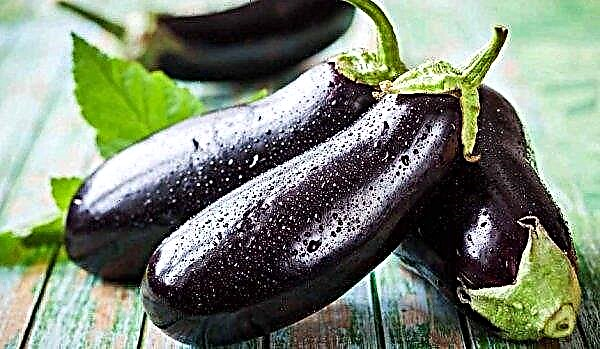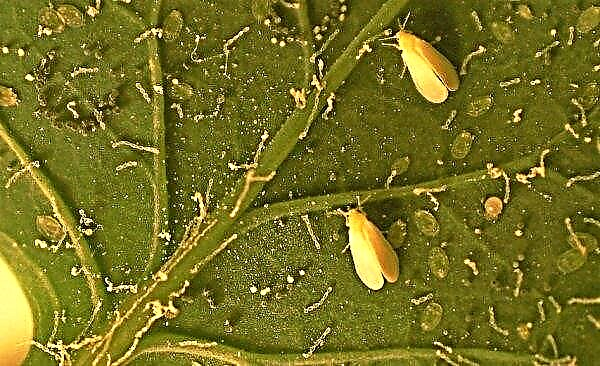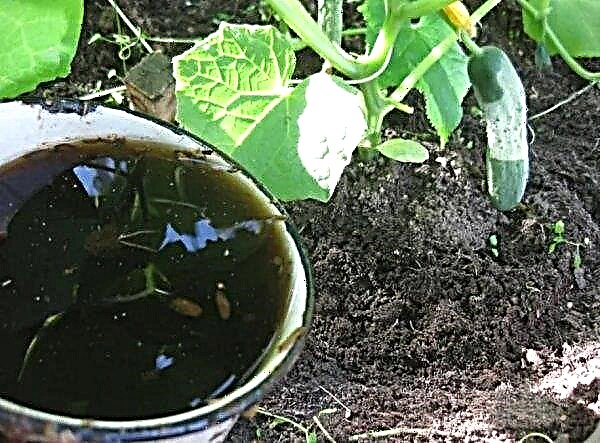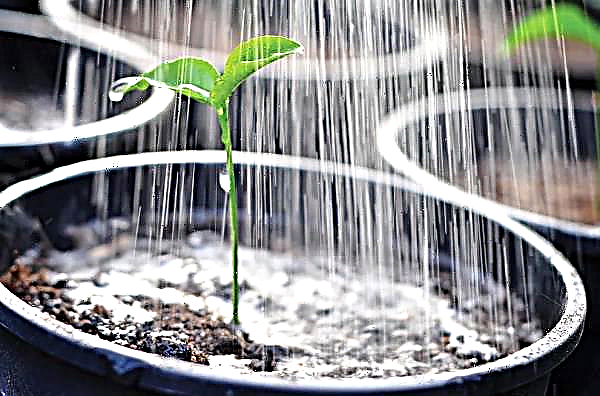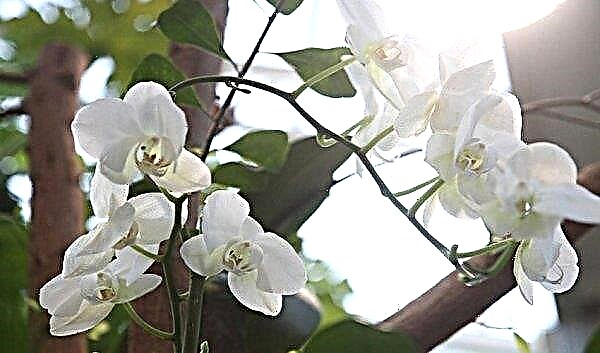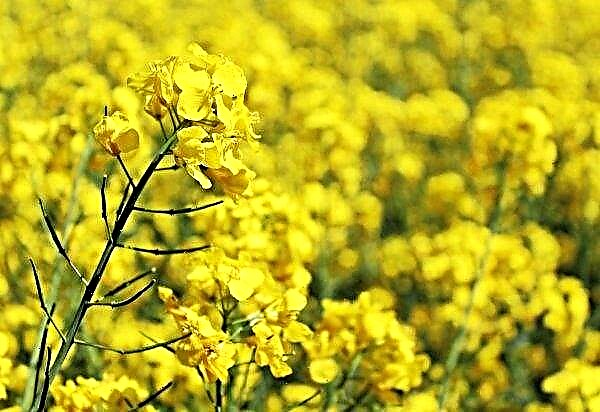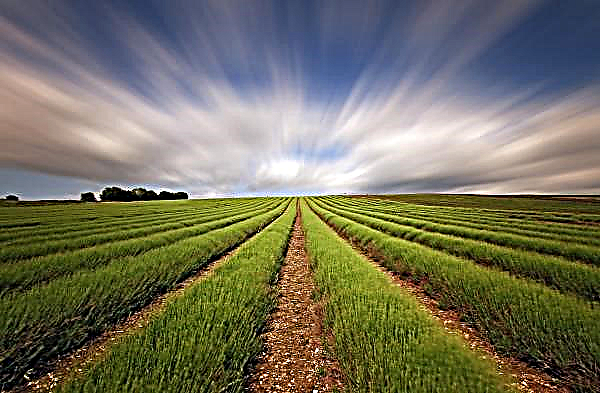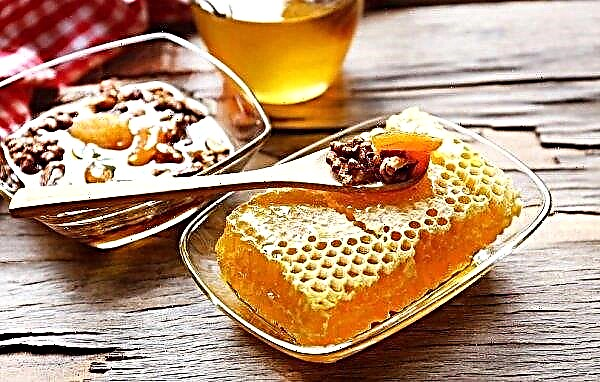Thuja has a beautiful evergreen needles. She always looks advantageously on the site and beautifully sets off other plants. Various types and varieties of this culture are popular today. The article is devoted to the description, characteristics and features of growing an interesting varietal specimen of Little Champion.
Description
Thuja western Little Champion is a dwarf form. In height, it does not exceed 1.5 m. The crown of this tree is in the form of a ball. It reaches a maximum width of 1.5 m. It is distinguished by its density and density. The needles are small, scaly.

The main feature of the variety is that the needles change color at different times of the year: in spring, summer and autumn they are light green, in winter they are brown-brown. The cones are small, painted in brown shades. The annual growth of the tree is 9 cm.

The following characteristics are inherent in the described thuja variety:
- compactness;
- slow growth;
- lack of need for frequent haircuts;
- high level of frost resistance - up to –30 ° С;
- unpretentiousness;
- color change of needles in different seasons;
- resistance to city conditions.
Did you know? The word "thuja" is translated from the ancient Greek language as "incense". The tree was so named because the inhabitants of ancient Greece and Rome burned the wood of this culture to appease the gods.
Features of planting and care
To thuja year-round and long time pleased with decorative, it is necessary to adhere to the recommendations for planting and care. It is important to choose the right site for cultivation and adhere to the technology of planting.
 Among the mandatory care procedures are watering, top dressing, cultivating, mulching, weeding. An important role is played by pruning and preventive measures against diseases and harmful insects.
Among the mandatory care procedures are watering, top dressing, cultivating, mulching, weeding. An important role is played by pruning and preventive measures against diseases and harmful insects.
Growth Requirements
The place to grow should be sunny. Although the thuja can put up with partial shade, without reducing its decorativeness. The site should be well protected from the winds, especially from the north. Thuja makes certain demands on the soil. It should be moist, fertile, well-drained. The required acidity level is 4.5–6.
Landing rules
Seedlings can be sold with an open and protected root system. If planting material is purchased in a container, then the day before planting it should be well watered. It is necessary to plant by transshipment without destroying the earthen coma. So the plant adapts faster and will grow. A pit should be dug 1.5–2 times the size of the container.
Important! When planting, the thuja should be controlled so that the root neck is located at ground level.
At the bottom it needs to be laid drainage. The closer the groundwater, the drainage layer should be higher. The earth extracted by digging a hole should be mixed with peat in a one to one proportion. The mixture needs to be fertilized with mineral fertilizers.
Next, proceed as follows:
- Remove thaw from container.
- Set an earthen lump in the center of the pit.
- Fill the voids with fertilized soil.
- Lightly seal.
- Watering.
- Lay a layer of mulch from the bark or peat.

Watering and feeding
In the first year after planting, thuja needs a lot of moisture. therefore it should be watered often - at least once a week. The same frequency should be observed in the future, if there is arid weather. With regular rainfall, thuja requires only two or three irrigation per month.
You can reduce the amount of watering by mulching. As a mulch, it is worth using pine bark or wood chips. The recommended layer height is 5–7 cm. Before wintering, the mulch should be changed.

It is possible to improve growth and development, as well as strengthen immunity by applying fertilizing. Mineral mixtures are suitable for thuja. In April-May, it is recommended to apply nitroammophoska (30–40 g / m²) or ready-to-use complex fertilizers suitable for conifers. In October, potash minerals will be required.
Important! Before winter, thuja cannot be fed. This can provoke a decrease in immunity and the development of various diseases.
Loosening
After each moistening and precipitation, the soil in the near-stem zone must be loosened. This procedure prevents the formation of a dense crust on the surface of the soil. By conducting it regularly, it is possible to improve the moisture and air conductivity of the soil. As a result, water and oxygen pass better to the root system, which generally positively affects the growth and development of the plant.
Video: Rules for boarding and caring for thuja
Disease and Pest Prevention
Thuja is characterized by resistance to diseases and attacks of harmful insects. But with errors during planting and care, the plant can get sick, which is manifested by a significant decrease in decorativeness: yellowing and dropping needles, drying out shoots. therefore it is important to resort to preventative measures.
So that the plant is not affected by late blight, rust, shute, in early spring it needs to be processed "Fundazolum", HOM, Abiga Peak, Bordeaux liquid, Topsinom-M. You can prevent the shoots from turning brown by using regular fertilizers and spraying every 2 weeks from July to October "Fundazolum".

It is possible to avoid the defeat of some insects. So, in order to prevent mites from reaching the site, it is important to establish the correct irrigation regime, avoid overdrying the soil, irrigate the plant, thus maintaining a sufficient level of humidity. Prevent attacks leaflets It is possible by double spraying with systemic insecticides.
Did you know? Thuja bark and needles have medicinal properties and are able to help with various diseases. Knowing such a feature of the tree, the French monarchs called it the "tree of life" and issued orders to plant this culture in royal parks.
You can save the thuja from the false shield by installing trapping belts. In order to prevent the moth from laying eggs on the tree, in the second half of June - early July, double treatment with pyrethroids should be performed. Avoiding the appearance of wireworms allows deep digging of the soil in autumn, careful collection of plant debris, drainage and liming of the soil.
Video: Causes and treatment of diseases of thuja
Shelter from the sun
For thuja winter frosts are not so much terrible as the first sun's rays in early spring. It was at this time that an unprotected plant was able to receive sunburn, which provokes a decrease in its decorative effect.
In order to avoid damage, in February it is necessary to wrap trees with kraft paper, agrofibre, spruce spruce branches or other materialsable to protect the crown from the rays of the sun. Shelter should be removed in April, when the threat of burning is already over.
Landscape design application
Thuja Little Champion is one of the most popular dwarf forms among landscape designers. Most often it is used in rockeries and rock gardens, planted alone or in groups. This variety can be found along garden paths.
An interesting solution is to add a thuja to the mixborder with the participation of only conifers or in combination with a saxifrage, heather, hydrangea, petunia, astilbe. The plant is suitable for container growing. It can be used in landscaping roofs, terraces, loggias.
So, the thuja variety Western Little Champion is actively used in landscape design. Specialists in decorating sites are attracted by its compactness, unpretentious care, strong immunity, the lack of need for frequent pruning, and a change in the color of needles throughout the year.


